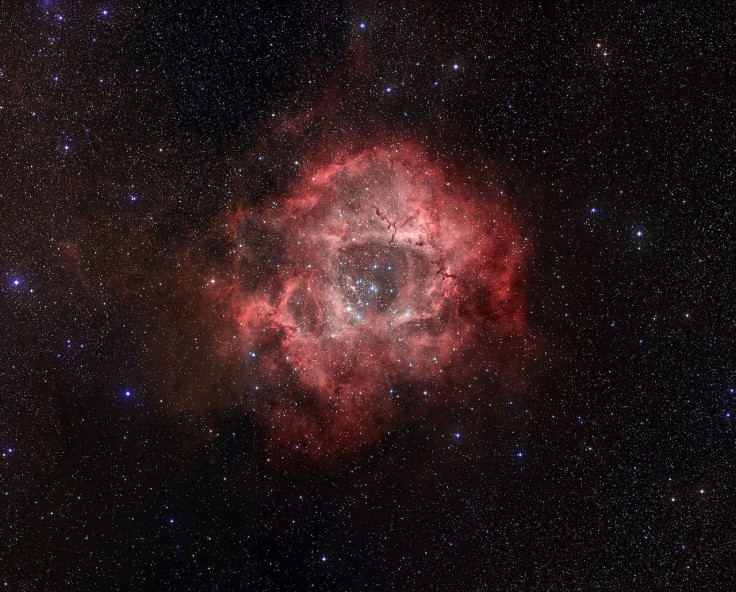Some 5,000 lightyears away sits a fiery red nebula in the shape of a beautiful rose.
Peering into the night skies will reveal a plethora of shapes and figures that are beyond one's imagination. The sheer number of nebulas, constellations, and other heavenly bodies is enough to spark one's imagination. But nothing is quite as breathtaking as the Rosette Nebula, which has been captured by the Hubble Space Telescope.
The Rosette Nebula has a New General Catalog designation of NGC 2237 and features an open cluster of bright young stars named NGC 2244, NASA reported. While shining brightly under the Hubble Space Telescope, the stars that make up the rose-shaped Rosette Nebula were in fact formed around four million years ago from the nebular material. Its stellar winds had formed a hole at its center, creating a flower-like shape visible under the microscope.
On top of its magnificent shape, the Rosette Nebula also features ultraviolet light from the hot cluster stars that causes it to emit a gentle glow. In terms of size, the Rosette Nebula spans around 100 to 130 light-years in diameter and lies near one end of a giant molecular cloud in the Monoceros region of the Milky Way Galaxy, about 5,200 light-years from Earth.
Nebulas Explained, As Seen Through the Hubble Space Telescope
Nebulas or planetary nebulae are defined as massive clouds of dust and gas that sit in the space between the stars. According to the Harvard & Smithsonian Center for Astrophysics, a planetary nebula is the result of a star dying, as it does not explode into a supernova or collapse within a black hole. Stars like the Earth's Sun instead sheds its layers and the remaining core becomes a white dwarf.
The Rosette Nebula is categorized as an emission nebula, meaning it had been formed of ionized gasses that emit light of different wavelengths, thus giving it a unique glow. There are different types of emission nebulae, including the H II region, such as the Rosette Nebula.
How Did the Rosette Nebula Get Its Rose Shape?

The unique rose shape of the Rosette Nebula as seen from the Hubble Space Telescope comes from the way the nebula was formed. EarthSky reported that at its core, there are young stars that are gravitationally bound to each other and are the result of the material of the nebula in an open cluster.
The Rosette Nebula's unique shape has fascinated astronomers throughout the ages, but probably not as much as English astronomer John Flamsteed, who first discovered the remarkable nebula in about 1690. Flamsteed is credited for discovering the open cluster within the nebula called NGC 2244, while another English astronomer by the name of John Herschel was credited for discovering the nebulous region called NGC 2239.
Read Also: #SpaceSnap The Alluring Crab Nebula Captured by the Hubble and Herschel Space Telescopes
More recently, a researcher at the University of Leeds in England named Christopher Wareing argued that at the center of the Rosette Nebula's cluster lies "massive stars" that are now "a few millions of years old and halfway through their lifecycle," Space.com reported. Intriguingly, however, he points out that the stellar winds have been flowing for so long that the central cavity should be "up to ten times bigger," but is not, making scientists
Wareing and his group of researchers simulated the Rosette Nebula's stars' actions using a simulation that featured a sphere, thick filamentary disc, and a thin disc to determine why it retained its shape and a smaller core. Researchers attributed this event to the thin disc, Wareing concluded.









